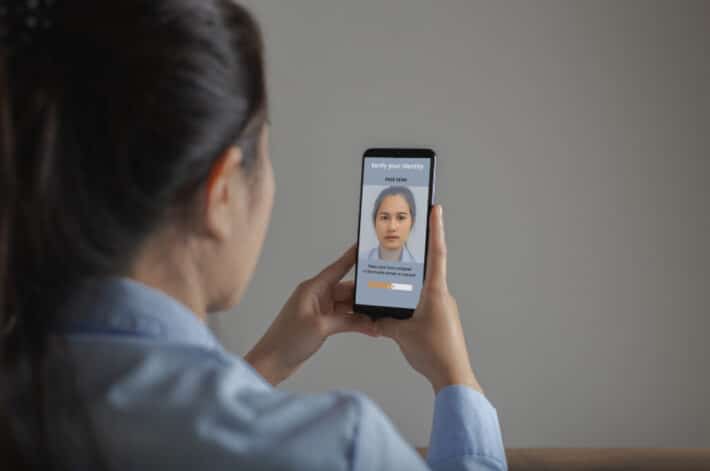The Future Of Identity Verification Ai And Machine Learning Innovations

In an increasingly digital world, the significance of identity verification cannot be overstated. As we engage in online transactions, social media interactions, and the exchange of sensitive data, ensuring that individuals are who they claim to be has become essential. This discussion aims to explore the evolution of identity verification methods, ID verification AI and machine learning, highlighting the transition from traditional practices to innovative approaches. Furthermore, it will address the challenges and concerns posed by advanced technologies, providing insights into the future landscape of identity verification.
This examination will unpack the complexities and potential of this critical topic, offering a comprehensive understanding of its importance in contemporary society.
What Is Identity Verification?
Identity verification is the process of confirming an individual’s claimed identity through a range of verification methods and technologies. As the world increasingly digitizes through advancements such as artificial intelligence, machine learning, and blockchain, the significance of establishing and maintaining the integrity of digital identity becomes paramount.
This process encompasses traditional methods, including biometric authentication, as well as contemporary techniques that prioritize data privacy and security, thereby mitigating risks associated with identity theft and fraud. In the current online security landscape, measures such as multi-factor authentication and encryption are essential for safeguarding sensitive information.
Why Is Identity Verification Important?
The significance of identity verification goes beyond the mere confirmation of an individual’s identity; it is instrumental in enhancing online security, preventing fraud, and ensuring user trust in digital transactions.
In an age characterized by widespread cyber threats, organizations must prioritize effective identity verification solutions as integral components of their compliance efforts with privacy regulations and risk management strategies.
By implementing robust verification protocols, businesses can cultivate customer trust and safeguard sensitive user data, thereby providing a seamless experience for legitimate users while deterring malicious activities.
What Are The Consequences Of Failed Identity Verification?
Failed identity verification can result in severe consequences, including identity theft, financial fraud, and significant reputational damage for organizations. When identity verification processes inadequately confirm user identities, they create opportunities for cybercriminals to exploit vulnerabilities, thereby jeopardizing sensitive user data.
Such failures not only compromise an organization’s security but also erode customer trust and confidence. It is therefore imperative for companies to implement robust verification methods and conduct thorough risk assessments to effectively mitigate these risks.
The implications of inadequate identity verification extend beyond immediate financial losses; they may also lead to long-term legal challenges and regulatory fines. For instance, a high-profile breach at a financial institution demonstrated that weak identity checks enabled scammers to siphon off millions before the fraud was detected.
Organizations may suffer reputational harm as customers increasingly seek services that prioritize data safety. This could result in decreased customer loyalty and potential loss of market share, underscoring the critical necessity for stringent validation processes that comply with contemporary cybersecurity standards.
How Has Identity Verification Evolved Over Time?
The evolution of identity verification has been significantly influenced by advancements in technology, which have transformed traditional methods into more sophisticated processes that address the increasing demands of digital transformation.
Initially dependent on basic forms of identification, the field of identity verification has incorporated biometric authentication methods, including fingerprint scanning, facial recognition, and voice recognition, to enhance both security and user experience.
These innovations have redefined identity management practices, facilitating real-time verification and the development of decentralized identity solutions that prioritize data privacy and user consent.
What Are The Traditional Methods Of Identity Verification?
Traditional methods of identity verification typically involve manual processes such as Know Your Customer (KYC), identity proofing, and document verification, wherein physical documents are presented to establish an individual’s identity. These methods commonly require users to submit various forms of identification, including government-issued IDs, utility bills, or bank statements, to validate their identity.
While effective in certain contexts, these traditional approaches can be time-consuming and susceptible to human error, rendering them less suitable in today’s fast-paced digital environment, where user experience is of utmost importance.
The dependence on physical documents not only heightens the risk of fraud but also presents accessibility challenges for users who may lack the necessary paperwork. This situation can lead to delays in the verification process and may deter many potential customers from engaging with services that utilize such outdated practices.
As a result, the limitations inherent in traditional methods have paved the way for innovative solutions, such as biometric verification and automated identity checks, which leverage advanced technologies to enhance security and streamline the user experience. These modern alternatives offer greater efficiency and reliability, ultimately transforming the landscape of identity verification.
What Are The Limitations Of Traditional Identity Verification Methods?
Despite their historical significance, traditional identity verification methods exhibit notable limitations that hinder their effectiveness in today’s digital landscape. Processes such as manual document checks can result in delays, increased operational costs, and a suboptimal user experience, potentially frustrating customers who seek swift and efficient verification.
Furthermore, these methods often lack scalability, posing challenges for organizations in adapting to expanding user bases and evolving security threats. This situation necessitates the adoption of more innovative solutions, such as AI-driven insights and real-time verification.
For example, a heavy reliance on physical documents exposes organizations to heightened fraud risks, as counterfeit documents can easily mislead even trained personnel. The cumbersome nature of these outdated processes may lead to lost customers who abandon transactions due to impatience.
As businesses expand into global markets, the inability to efficiently verify identities across diverse regulatory landscapes further emphasizes the urgent need for transformation. By embracing modern technology, including biometric solutions and decentralized identity platforms, organizations can significantly enhance the overall verification experience, rendering it faster, more secure, and considerably more user-friendly. This transformation ultimately fosters trust and satisfaction among users.
What Is The Role Of AI And Machine Learning In Identity Verification?
Artificial intelligence (AI) and machine learning are revolutionizing identity verification by greatly improving the accuracy and efficiency of the verification process through advanced analytics and real-time anomaly detection. By utilizing machine learning algorithms, organizations can effectively analyze user behavior patterns and enhance risk assessments, thereby streamlining the verification process while reducing the likelihood of fraud.
As technological advancements continue to progress, the integration of AI-driven insights will further enhance identity verification solutions, allowing businesses to deliver a seamless user experience without compromising security.
How Do AI And Machine Learning Improve Identity Verification?
Artificial intelligence (AI) and machine learning significantly enhance identity verification by employing user behavior analysis and deep learning techniques to accurately assess and confirm identities through various verification methods. These advanced technologies enable organizations to automate processes, facilitating faster decision-making and minimizing the need for manual intervention.
By continuously learning from new data and emerging trends, these systems can rapidly adapt to the ever-evolving landscape of security threats. For instance, the integration of biometric data, such as facial recognition or fingerprint scanning, provides a robust layer of security that not only enhances the user experience but also effectively mitigates potential fraud attempts.
In real-time scenarios, machine learning algorithms can analyze a user’s transaction history and behavioral patterns to identify any anomalies, thus reducing the risk of identity theft. Consequently, the implementation of measures such as anomaly detection in login attempts significantly strengthens protective strategies, underscoring the critical role that AI and machine learning play in contemporary identity verification methodologies.
What Are The Challenges Of Implementing AI And Machine Learning In Identity Verification?
The implementation of artificial intelligence (AI) and machine learning in identity verification presents a range of challenges, particularly concerning algorithmic bias and data privacy, both of which can significantly affect user trust and regulatory compliance.
For example, when organizations utilize facial recognition technologies, there is a risk of inadvertently favoring certain demographics while marginalizing others, thereby perpetuating societal inequalities. These issues underscore the necessity for comprehensive auditing and testing of AI models to ensure fairness across diverse populations.
Furthermore, data privacy concerns are exacerbated by stringent regulations such as the General Data Protection Regulation (GDPR), which impose severe penalties for breaches. This compels businesses to adopt robust data handling practices. As companies endeavor to innovate with advanced technology, they are faced with the critical challenge of maintaining transparency and accountability while safeguarding customer trust and ensuring compliance with applicable regulations.
What Are The Potential Uses Of AI And Machine Learning In Identity Verification?
Artificial intelligence and machine learning present a wide array of potential applications in the realm of identity verification, encompassing biometric authentication and seamless integration with digital wallets. These advanced technologies can significantly improve the accuracy of facial and voice recognition systems, enabling organizations to verify identities quickly and securely.
Moreover, the utilization of predictive analytics and machine learning algorithms allows businesses to implement adaptive security measures that respond to evolving threats in real-time, thereby ensuring a comprehensive defense against identity fraud.
1. Facial Recognition
Facial recognition technology, driven by artificial intelligence, is increasingly employed for identity verification to enhance security measures through biometric authentication. This technology analyzes facial features and compares them against a database of known identities, facilitating rapid verification in both physical and digital environments. Due to its capability to provide real-time verification, facial recognition has become an essential component across various sectors, including finance, travel, and security. However, its implementation has also sparked discussions surrounding user privacy and ethical AI practices.
The adoption of this innovative technology enables businesses and organizations to streamline operations, reduce instances of fraud, and protect sensitive information by accurately verifying individuals. Nonetheless, the widespread application of facial recognition technology raises concerns regarding its implications for user privacy, as personal data may be vulnerable to misuse and unauthorized access.
As society continues to engage with these technological advancements, it is crucial to find a balance between harnessing the advantages of identity verification and addressing the ethical issues associated with surveillance and data protection. Ensuring that appropriate safeguards are established is imperative for responsible implementation.
2. Voice Recognition
Voice recognition is an increasingly powerful tool in identity verification, employing advanced AI algorithms to authenticate users based on their unique vocal patterns. This biometric authentication method not only enhances security but also improves the user experience by facilitating seamless access to services without the need for traditional passwords.
As voice recognition technology continues to advance, its integration into applications such as customer service and financial transactions is gaining popularity, providing both convenience and robust security.
By analyzing various characteristics of an individual’s voice, including pitch, accent, and cadence, this technology ensures that only authorized users can access sensitive information. For example, financial institutions are increasingly implementing voice recognition for phone banking, allowing customers to verify their identities quickly and securely.
However, challenges persist, including the potential for spoofing through recorded voices and concerns regarding privacy protection. It is essential to maintain a balance between security and convenience, as advancements in voice recognition software must also prioritize safeguarding users against such vulnerabilities.
3. Behavioral Biometrics
Behavioral biometrics represents a cutting-edge approach to identity verification that examines distinct patterns in user behavior, including typing speed, mouse movements, and navigation habits. By employing artificial intelligence and data analysis methodologies, organizations can continuously monitor user activity to identify anomalies and flag potential security threats in real time.
This approach not only enhances security but also facilitates a seamless user experience, as legitimate users are typically unaware of the verification processes occurring in the background.
The importance of behavioral biometrics lies in its capacity to integrate security measures discreetly, without hindering users’ interactions with digital platforms. For example, when an individual accesses their bank account, this technology can assess their typical behavior and notify the bank if it detects any unusual activity that may indicate fraudulent behavior. This ensures that a user’s identity is securely safeguarded while their experience remains smooth and intuitive.
By implementing such advanced verification techniques, organizations can significantly bolster their defenses against cyber threats, while simultaneously fostering trust and satisfaction among their user base, thereby achieving an effective balance between safety and convenience.
4. Document Verification
Document verification is the process of validating the authenticity of identification documents, serving as a critical component in identity verification that ensures compliance with regulatory standards and enhances overall security.
With advancements in technology, automated document verification systems are now capable of analyzing and cross-referencing user data against official databases, thereby significantly reducing the need for manual checks and minimizing associated errors. This process is particularly essential in sectors such as finance and healthcare, where accurate identity verification is crucial for preventing fraud and maintaining data privacy.
By incorporating advanced technologies such as Optical Character Recognition (OCR) and Artificial Intelligence (AI), organizations can achieve greater accuracy and efficiency in their identity verification processes. These innovations not only facilitate expedited decision-making but also strengthen compliance with stringent regulatory frameworks.
As businesses increasingly recognize the importance of robust security measures, the integration of real-time document verification becomes paramount, as it mitigates risks associated with identity theft and enhances customer trust.
This enables organizations to establish a secure digital environment, making the adoption of such technologies imperative within their operational frameworks.
What Are The Concerns Surrounding The Use Of AI And Machine Learning In Identity Verification?
While artificial intelligence and machine learning provide substantial advancements in identity verification, they also present concerns related to privacy, security, and algorithmic bias that require careful management.
The implementation of AI technologies may inadvertently lead to discrimination if the algorithms are not properly trained, which can result in unjust treatment during verification processes.
Furthermore, as organizations gather and analyze sensitive user data, the risks associated with data breaches and misuse increase, underscoring the necessity for the establishment of robust security measures and comprehensive compliance frameworks.
1. Privacy Concerns
Privacy concerns have become increasingly prominent in discussions related to identity verification, particularly in the context of the growing prevalence of AI and machine learning technologies. The collection and analysis of user data for verification purposes carry the risk of potential misuse if not managed in strict accordance with data privacy regulations.
Organizations are required to prioritize user consent and transparency in their processes to effectively address these concerns, ensuring that users are informed about how their data is utilized and protected.
Considering regulatory developments such as the General Data Protection Regulation (GDPR) and other privacy laws, companies involved in identity verification face considerable pressure to implement robust data protection measures. Non-compliance not only endangers users’ personal information but may also result in severe penalties for organizations.
For example, biometric data—often a crucial element in verification processes—must be adequately safeguarded against unauthorized access and breaches. Therefore, it is imperative for companies to adopt strong encryption methods and establish limited data retention periods, thereby enhancing user trust and ensuring compliance with legal standards.
2. Biases And Discrimination
Biases and discrimination present significant challenges in the field of identity verification, particularly when utilizing AI-driven technologies. If algorithms are not meticulously designed and rigorously tested, they may inadvertently favor certain demographics over others, resulting in unequal treatment in verification outcomes. This algorithmic bias can compromise the integrity of identity verification systems and diminish user trust. Consequently, it is imperative for organizations to proactively address these issues through comprehensive testing and the adoption of ethical AI practices.
The implications of biased AI systems extend beyond individual users; they can impact entire industries and undermine public confidence in digital security measures. For instance, consider a scenario in which a facial recognition application consistently misidentifies individuals from specific ethnic backgrounds, leading to the denial of access to essential services. Such occurrences contribute to a cycle of mistrust, causing marginalized groups to question the very technologies that are intended to safeguard them.
Therefore, enhancing transparency and accountability in AI development is essential. The utilization of diverse datasets, regular audits, and stakeholder engagement can not only enhance accuracy but also promote a more equitable approach to identity verification, ultimately benefiting all users.
3. Security Risks
Security risks remain a significant concern in identity verification, particularly as organizations increasingly rely on artificial intelligence and machine learning to process user data. The potential for cybersecurity threats, such as data breaches and unauthorized access, jeopardizes the integrity of identity verification systems and can compromise user privacy.
To mitigate these risks, companies must implement robust security protocols, including encryption and threat intelligence, while continuously monitoring their systems for vulnerabilities.
The integration of biometric technologies, while enhancing user experience, also presents unique vulnerabilities that malicious actors may exploit. For example, fingerprint and facial recognition systems can be deceived by sophisticated spoofing techniques, thereby placing user identities at greater risk.
As a result, enterprises must prioritize multi-factor authentication methods and conduct regular security audits to identify and address potential weaknesses in their identity verification frameworks. By adopting these measures, organizations can strengthen their defenses against evolving threats and ultimately foster greater trust in their identity verification processes.
Frequently Asked Questions
What is the future of identity verification?
The future of identity verification lies in the advancements of AI and machine learning technologies. These innovations will revolutionize the way we verify identities and make the process more efficient and secure.
How will AI and machine learning impact identity verification?
AI and machine learning will greatly improve the accuracy and speed of identity verification. These technologies can analyze vast amounts of data and make precise decisions, making the process more reliable and secure.
Will AI and machine learning replace human verification?
While AI and machine learning will play a crucial role in identity verification, they will not completely replace human verification. Human oversight and intervention will still be necessary to ensure accuracy and prevent errors.
What are the benefits of using AI and machine learning for identity verification?
Some benefits of using AI and machine learning for identity verification include faster verification times, increased accuracy, and improved fraud detection. These technologies can also reduce costs and provide a more seamless customer experience.
How can AI and machine learning improve fraud detection in identity verification?
AI and machine learning can analyze patterns and anomalies in data to detect potential fraudulent activities. These technologies can also continuously learn and adapt to new fraud techniques, making it more difficult for fraudsters to bypass identity verification measures.
Is there a concern for privacy with the use of AI and machine learning in identity verification?
Privacy concerns are always a valid consideration when implementing new technologies. However, with proper data protection and security measures in place, the use of AI and machine learning for identity verification can actually enhance privacy by reducing the need for individuals to share sensitive personal information.



